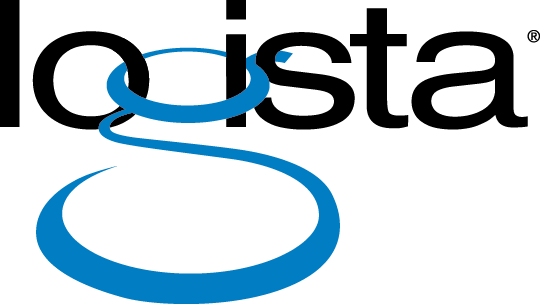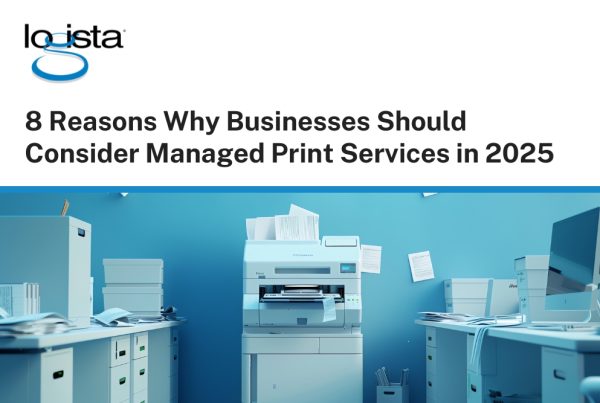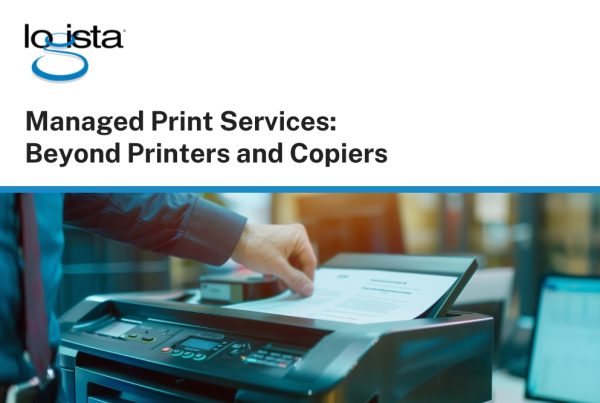Need help taking control of your print expenses? We asked Jackson Jordan, SLED IT Account Executive for Logista Solutions, for some insights into the challenges, best practices, and solutions for managing printing costs in the workplace.
Whether you’re a small business owner or a CIO of a large corporation, read on to find out how you can better manage your printing costs and maximize your savings.
What printing cost issues do you see organizations facing?
Jackson’s response: When looking at managed print or office printing in general, I think companies don’t understand what their costs are and how to control them. When looking at office printing costs, there are three categories that I look at. There are hard costs, soft costs, and the cost of mitigating risk. When I talk about hard costs, I mean the actual cost of the hardware, supplies, and maintenance to service that hardware.
Soft costs include the time spent by internal IT people repairing devices, installing print drivers at an employee’s desk or other types of print-related tasks that IT is involved in. They also include time spent paying multiple invoices or managing multiple contracts and purchasing toner. I often see stacks of toner sitting under an employee’s desk; it’s costing you to have that money tied up in unused inventory.
The cost of mitigating risk is about the level of printer security needed. For example, a school district may not need a high level of security on a lot of their printers if teachers are printing day-to-day documents for their classrooms. However, a counsellor that is printing sensitive information may need a higher level of security on the printer they use to make sure that sensitive information isn’t shared with people who shouldn’t have access to it. Financial and healthcare organizations deal with sensitive information every day, so their risk would be much higher. Those types of companies have to think about what it’s going to cost them if that information is exposed in some way.
How can businesses control printer hardware costs?
Jackson’s response: I think the number one thing companies can do to save money on hardware-related costs is to consolidate devices where appropriate. A lot of times I’ll see a color printer, a copier or an MFP and a fax machine all sitting lined up next to each other. All those devices could be consolidated into one device. I’ve seen financial institutions that have two different cost centers with two printers sitting right next to each other that are the exact same model, but they belong to two different cost centers, and they came out of two different budgets. Those devices should be consolidated and then the prints can be billed back to the appropriate cost centers.
“One big thing that is possibly more important than reducing your printing expenses is having a predictable budget. If you know what you’re going to be spending on your office print every month, you can predict that out into the future. Understanding that will help you set your budget and really know where you need to be with your office printing.”
– Jackson Jordan, SLED IT Account Executive for Logista Solutions

Another way to reduce hard costs would be to right-size your devices; making sure that your devices are efficient for the volume that’s being run on them. Implementing an automatic toner fulfillment system would also control overspending. You’ll have toner arriving when you need it, and you would only pay for that toner as it arrives for that device.
Having new up-to-date, reliable, modern devices helps to control the need for service calls. If you have an old device that breaks down a lot, maintenance and new parts can be costly, and the downtime can be frustrating. If you have a schedule to refresh your devices, you know you’ll always have new reliable devices in place.
Is outsourcing printer service a good idea?
Jackson’s response: Nowadays, organizations really don’t want to be hiring break/fix technicians to be working on printers. They want to be hiring IT staff to be working on solutions to business problems and not fixing hardware. That money would be better used to outsource to a company that specializes in break/fix services for printers, copiers and MFPs.
Consolidating the number of vendors and contracts that you’re working with will really lower the amount of time spent by the accounts payable and finance departments that deal with them, as well as the time your IT staff may be spending with those vendors. Dealing with fewer vendors and as few contracts as possible will significantly lower your soft costs.
What should be done to support printer security?
Jackson’s response: The cost of mitigating risk is going to be different for individual companies. For example, schools are going to have different security needs from banks, financial institutions, and hospitals. It’s important to understand what the possible threats are, what the likelihood of a potential loss is, and what the size of that loss would be if there was a breach in security to determine what level of security you’re going to need to implement for your office printing.
If you have to implement a lot of security measures, that’s going to possibly increase some of your costs, but it could also possibly save you a lot of money down the road if you have a breach.
One big thing that is possibly more important than reducing your printing expenses is having a predictable budget. If you know what you’re going to be spending on your office print every month, you can predict that out into the future. Understanding that will help you set your budget and really know where you need to be with your office printing.
About Logista Solutions
Logista Solutions is a nationally recognized leader in a broad range of technology management solutions. As one of the largest technology support providers in the U.S., Logista provides innovative and holistic solutions to help companies take control of their IT infrastructure and achieve better business outcomes. Popular services include Managed IT as a Service, VoIP and Unified Communications, Managed Print, Cloud Services and Asset Disposition.



